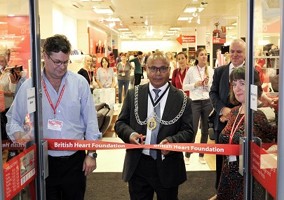Charity shops are “inundated with waste” and are failing to separate items that could be sold in its shops and reused, a committee of MPs has heard.
Jane Grice, founder of Wast Not Want Not - a Facebook group, and it is a group of artisans and crafters who upcycle, was giving evidence to the Environmental Audit Committee’s inquiry on the sustainability of the fashion industry earlier this month.
She said: “If people do not put their things in the bin they tend to take them to a charity shop and charity shops are inundated with waste.”
After volunteering in a charity shop she said she had found that: “There are a lot of things that get put straight in the bin for the ragman, or the textile recyclers is probably the proper word. It has labels on. It has never been worn.”
But this is the kind of thing that could be reused.
“As upcyclers, people that I am representing today, people that make things out of old things, they want to get their hands on that and they are finding it difficult to get their hands on anything from a charity shop. The reason for that is because the charity shops find it easier to just parcel it all up and get 35p a kilo than offer it out to the public at a reduced rate.”
She suggested mandatory bargain days because prices in charity shops are too expensive.
“If all charity shops had to have bargain days, jumble days, bargain rails, where people who want to either get cheap clothing that is wearable, because it is all wearable, or want to upcycle it because you do not want to pay the rate that most charity shops are charging now—because this is another problem. Once you go into a charity shop it is more like going into a vintage store. The prices are silly and they cannot sell it at those prices. It does end up going back in the rag bin.”
She added that: “I have since learned that charity shops do value that 35p a kilo because it is quite important to them.”
Andrea Speranz, from the charity Textile Recycling and International Development (TRAID) also gave evidence and said that increasing home collection for textiles was one way to increase re-use.
She said some local authorities in London were telling the charity to remove clothing banks because of fly tipping.
“We might be finding a solution for our problem but we might generate another one. Do we have enough drop-off in our libraries, our local community centres, our work spaces, our schools? All these not only encourage people or make it easy for those who are recycling clothes now, who are using it, but also remind those who are not doing it that there is the possibility to do it,” she said.
But she also said that TRAID had introduced home collections because dropping off bags of clothes can be difficult for some people.
“One of the benefits of the service—it is one of many, and people have different habits, communities are different—is that we keep the quality of the clothes. Sometimes people, with the best intention, drop off a bag of clothes outside the charity shop that is closed. It is Sunday evening, it is raining, and next day when we collect it, it is wet.”
|
Related articles











